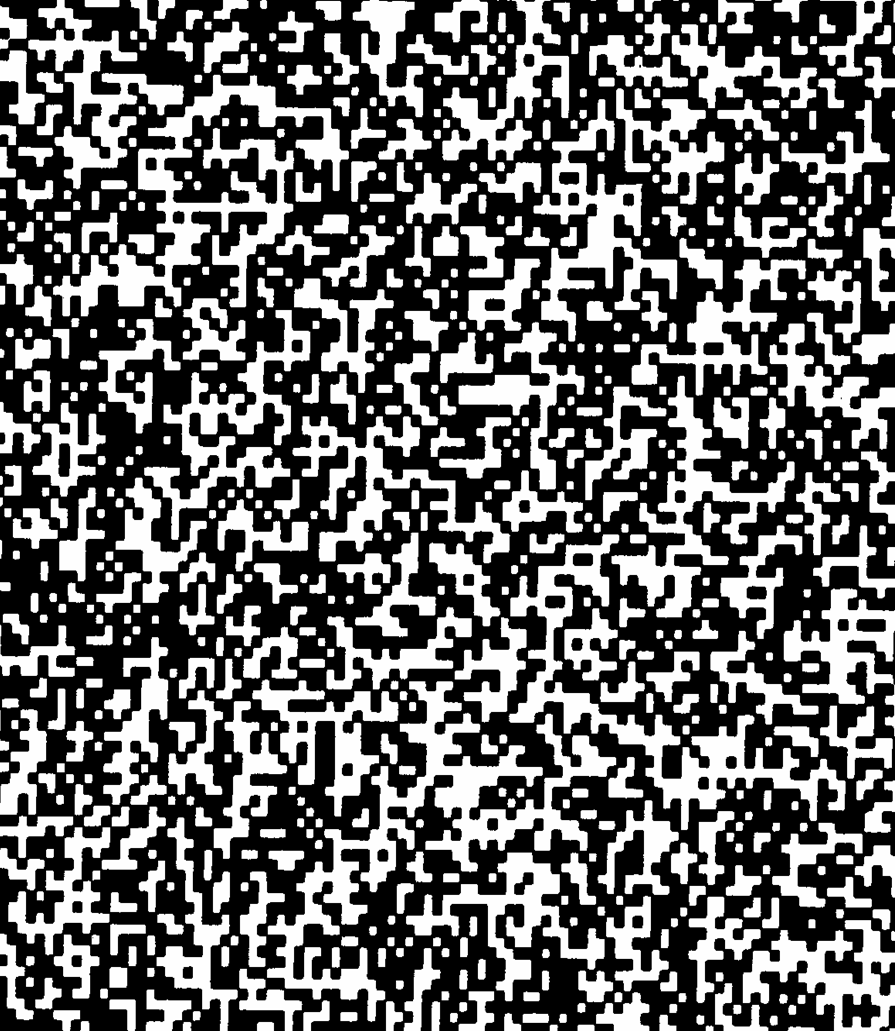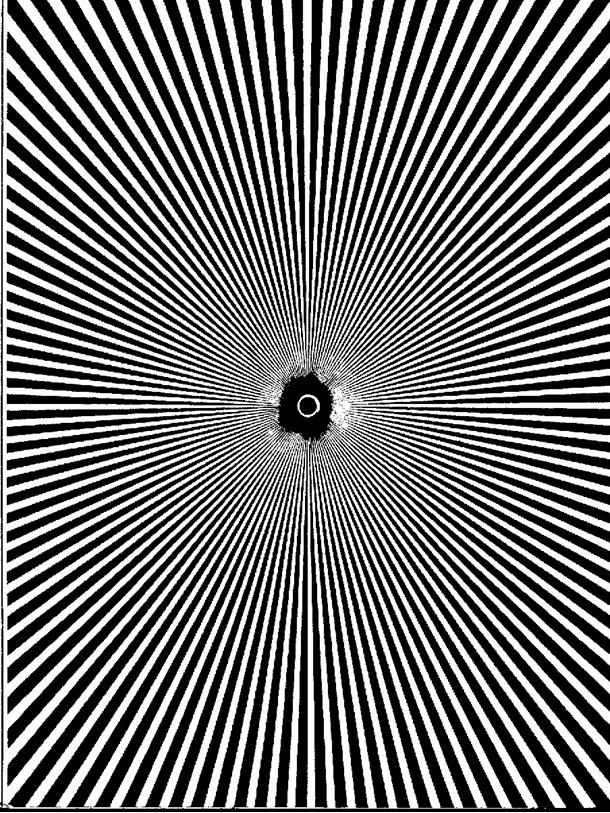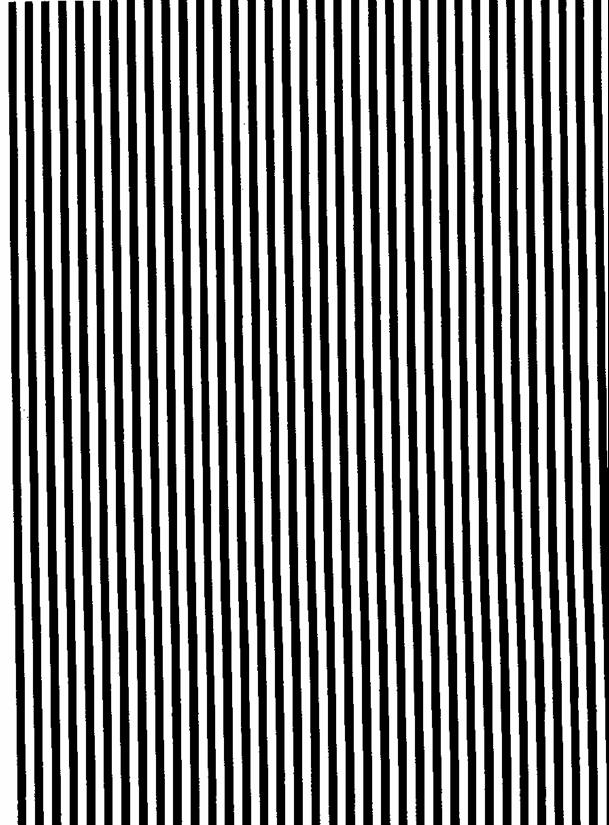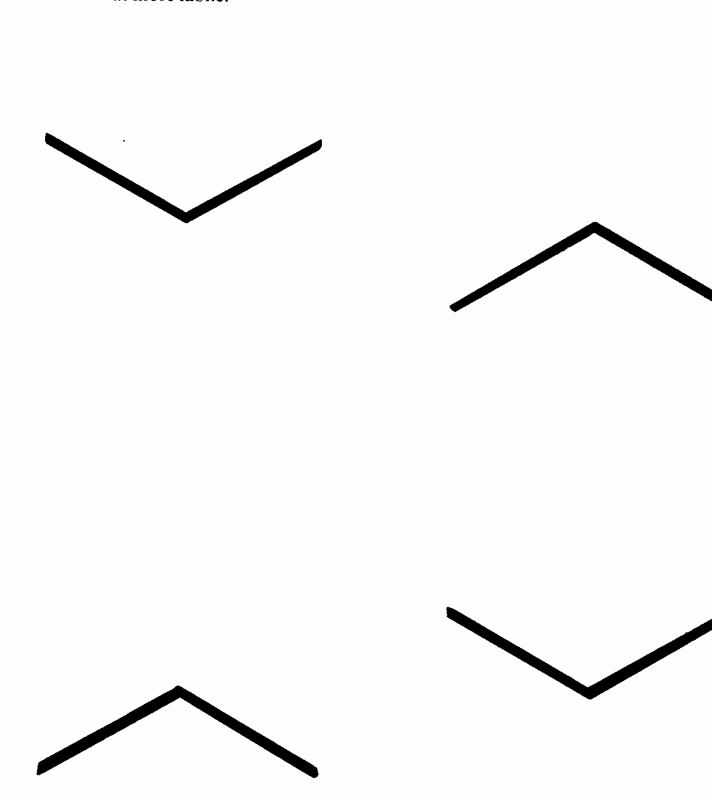Art, Design and Psychology



Perceptual Constancy
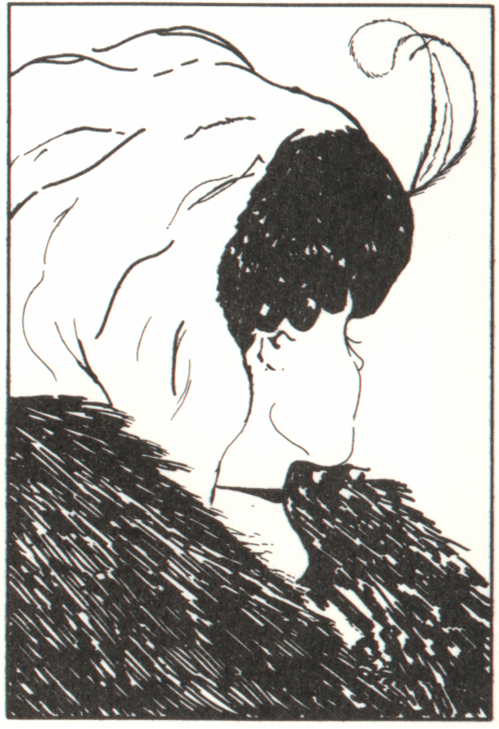
Probably the best known example of a visual illusion is the picture on the left.
Look closely, what do you see?
Can you see a young woman?
Can you see an old woman?
It all begins with Memory and how it works!
Three
kinds of Memory Storage
1. Sensory information store - very short term, fractions of
a second (afterimage), information held is not processed or interpreted
(its not needed)
sensory = visual representation, touch,
smell, etc.
2. Short term memory = identifies object features such as colour
3. Long term memory = generated abstract meaning
The three systems are not localised or isolated but they do have
- different systems of operation
- different representations

R.L. Gregory (1966) The Eye and the Brain … is perhaps the best known text that related the scientific study of the function of the eye and its relationship to the brain.
He says:
The task of the eye and brain is quite different from either a photographic or a television camera converting objects merely into images.
There is a temptation to say the eye produces pictures in the brain.. … one that has to be resisted.......
Gregory identifies a series of factors which influence this connection between eye and brain.
These are:
- Seeing - the processes by which we see the world and the connections, through the neural net, that we use to make sense of it
- Light - we need light to see, and we see in colour! The eye is sensitive to light.
- The eyes - two eyes work in co-operation (stereo vision) and as range finders.
- The brain (the only lump of matter we know from the inside) processes the information gathered through our eyes and is complex and mysterious. Concerned with thinking, memory, and sensation (not only visual stimulus but all five senses).
- Seeing brightness - the effects of intensity (measurable physical energy) and brightness (an experience). Linked with seeing colour, brightness is associated with hue and thus with the emotional experience of colour.
- Seeing movement - on the edge of the retina only movement is registered so we see things moving peripherally, without being able to identify them as an object. Without being able to identify movement, we would be unable to detect either danger or food! Our perception of movement is enhanced as not only does the world move but our eyes can also move. The two movements work in conjunction with each other.
- Seeing colour - an off shoot of visual perception, colour affects our emotions and our visual aesthetics. With an extraordinary variety of theories, the study of colour began with Newton’s Opticks written in 1692, destroyed in a fire and not published until 1704, his last book instead of his first.
Gregory’s Theory of Illusions
When perception ‘goes wrong’ we have an illusion of reality. This can happen in many ways, and very sometimes very dramatically! Illusions happen in four main ways:
- drug induced states (altered states of reality)
- mental illness (hallucinations)
- distortions
- Hallucinations and Dreams
- very similar - visual or auditory (but can involve other senses: touch,
smell)
socially determined (witnesses of events which never occur)
Two ways of viewing hallucinations:
- Mystics: people who have insights into another world of reality and truth (supra physical reality) where the brain gets in the way of understanding (see Aldous Huxley Doors of Perception - the complete text is on-line)
- Empirical Philosophers: people who consider hallucinations as abnormal outputs of the brain (not to be trusted)
Definition of hallucination: Spontaneous activity of the nervous system when unchecked by sensory information
What we know about
the brain's auto stimulation (situations where hallucinations
may take place):
Premise: The brain is continually active (as it is in
sleep and dreaming).
- Brain Tumours and Epileptic seizures may cause hallucinations of various kinds.
- SENSORY DEPRIVATION - the active brain runs wild and hallucinates (terrifying and dangerous or irritating and amusing)
- Possibly in SCHIZOPHRENIA when the outside world makes little contact with the individual
- In normal life, when isolation and lack of stimulation, such as when operating automatic machines.
- In outer space (don’t go there alone!)
(Gregory clearly stated that he has no evidence to support the mystic viewpoint but does recognise that uncontrolled brain activity could indicate something of hidden motives and fears.)
Figures
which Disturb (Distortions)
|
|
Simple forms can disturb |
|
Research
suggests that the visual system is upset by redundancy of patterns
Look at the pictures above for a while and wavy lines appear (similar to when you look at a blank wall where an imprint appears). It may be that the eye movements searching over the image create massive on/off signals, rather like a flickering light. The same
thing happens with parallel lines [on the right] But sometimes, it has a purpose.......(See Marr's Theory) |
|||
Visual Distortions Almost everyone sees these distortions, including animals. |
||
. |
a Muller-Lyer’s arrow illusion where a part of the figure appears longer/shorter, and of a different size even though when measured, the lines are identical in length b The Ponzo, or railway line illusion where one circle looks larger than the other c The Horizontal/Vertical Illusion the upright line looks longer than the base line it stands one, even though they are the same length d Tichener Illusion - The centre circles look different sizes |
|
The Muler Lyer arrows still work, even without the vertical bars. |
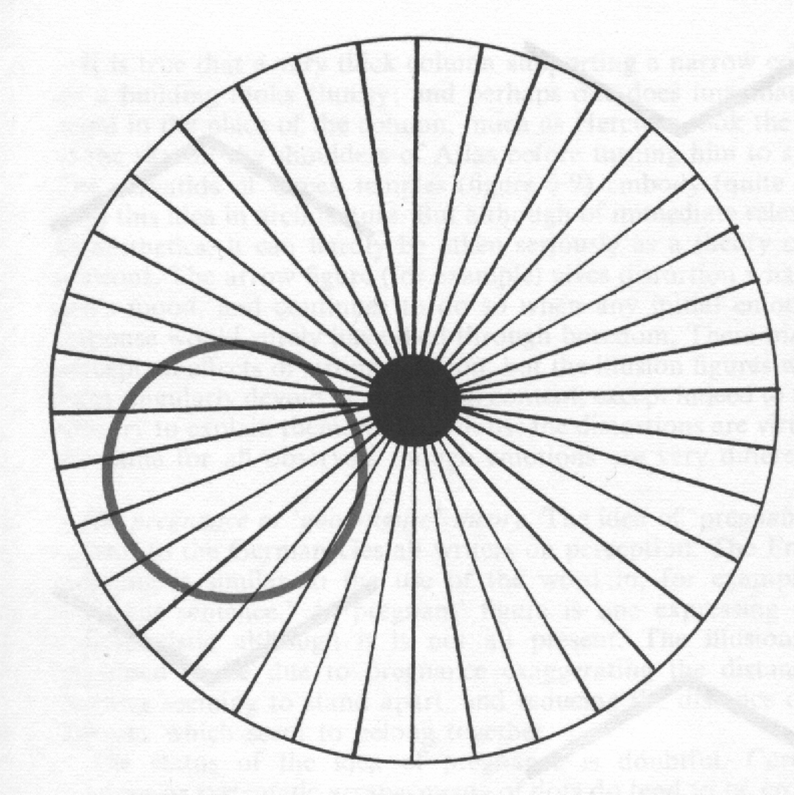
|
|
How do these illusions work then?
- Our eyes move - neat theory but rejected, you just have to watch someone looking to see their eyes don't move.
- Confusion theory - not reliable enough
- Empathy theory - viewer is emotionally involved by associating with the figure, thus causing distortion, much as emotions confuse thinking e.g. the arrows suggest expansion, which is what we see. Not true, because we experience the distortions whatever our mood, and we all see the distortions, and can have many moods.
- Pregnancy (the gestalt of the figure) similar to the idea of a ‘pregnant silence’ the figures are loaded with meaning.
- Perspective (a
strong history to this one). Flatten versions of the experience of the
three dimensional world. It about distance: the parts of the figure
which represent distant objects are enlarged, those representing nearer
objects are reduced (it’s the corner of a building, or the corner
of a room).
Plausible, but not completely water tight as if you change the view (ie the arrows become a steeple jack’s view of a roof) the illusion still works.- Why should distance (and depth) change size?
- Why should distance
make things appear bigger when we know that things further away
are smaller?
Perspective is the best theory we have to date, and is worth following up (as Gregory does in detail)
SIZE CONSTANCY - A TENDENCY TO CHANGE VIEWING DISTANCES.
AN IMAGE DOUBLES IN SIZE WHENEVER ITS DISTANCE IS HALVED. The brain compensates for this.
A test - look
at your hands, placed at arms length, draw one hand closer to you by bending
your elbow - the hands continue to look the same size, even though the
furthest away hand is half the linear size.
Now let the nearer hand overlap the other and you will see the difference
in size - the hand nearest to you covers the other hand........ even though
you know they haven't change size, just their position.
(This was first identified by DESCARTES)
But this is ok in reality, but we are looking at a piece of paper or a book (or in your case we are looking at wall, at projected image which could be a canvas or a image on a screen - the cinema or TV. A flat image.
Many of the tests carried out by psychologists involved darkened rooms with phlorescent strings or wires, which converge to given perceptual rules of change. Since the Rennaisance, experiments with measurements, string grids, and marking out perceptual space have taken place. Details of these empricial science experiements are multiple and deserve further exploration, but not here and now.
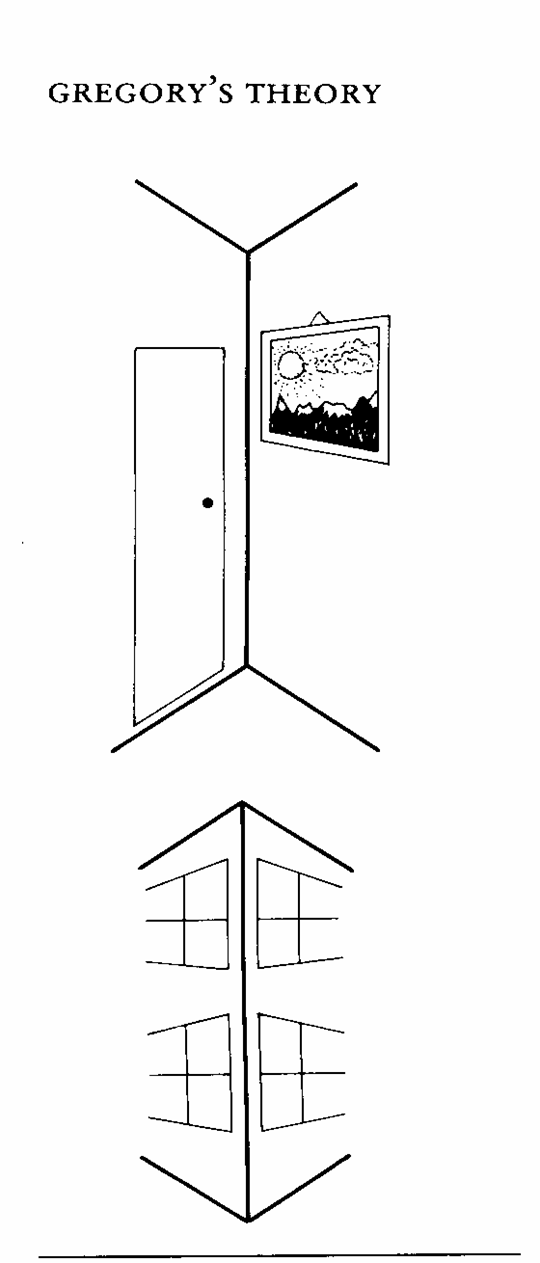 |
Gibson's Theory of Size Constancy Living in a Western ‘squared’ world, full of rooms with corners, and railway lines. We 'read' reality, with perspective. In other cultures, the world is often experienced as rounded or circular, in houses (huts), with land ploughed in curves. (East/Western perspectives) diamorphic perspective and a series of cultural traditions. Near and far can be perceived differently: aborigines, forest dwellers, ice snow, light/dark, etc. |
Perspectival clues are important only after considerable experience of perspective clues in photographs, and the flattened world of the visual image. So much so, that it could be claimed that our world is more clearly perceived through the flat experience - through illusion, not reality. Hardly surprising then that the children’s drawings create a world of imagination, of play, on paper that is real, until the age of logic and visual reality, of perspective and illusion takes over as representing the real.
It could be said that it is the role of the artist to begin re-entry into the area of play between the real world and the reality of representation of the real.
Its worth remembering that
it is not until the age of the Renaissance (and the birth of Science)
did the artist/scientist discover the laws and rules of perspective. Previously,
much older systems of representation gave very different views of the
world. (See Dubery, Fred
and Willats, John (1972) Drawing Systems Studio Vista
(Margaret Street Library 741.2/Dub)
Lecture
List - Gestalt -
Gibson
